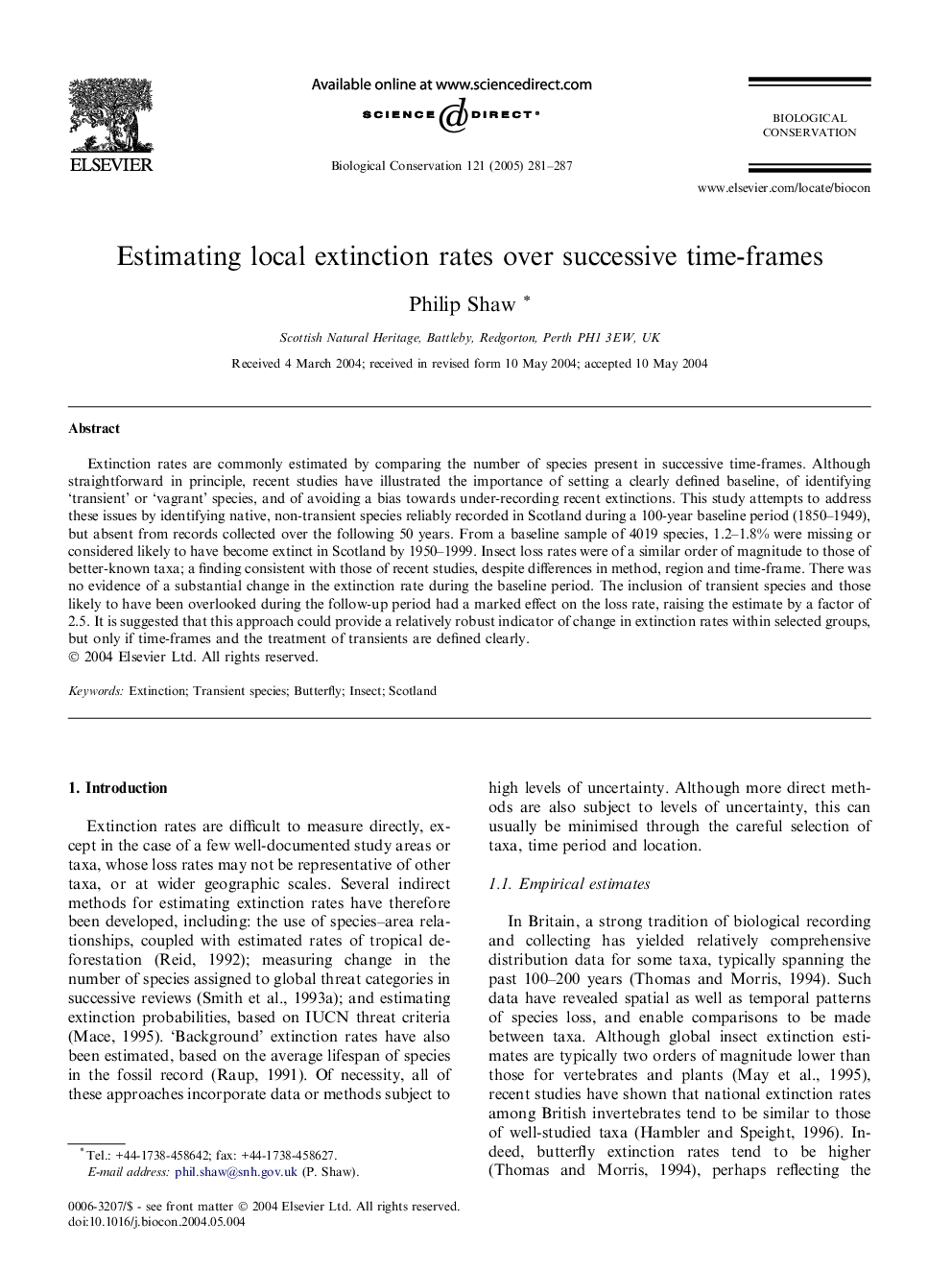| Article ID | Journal | Published Year | Pages | File Type |
|---|---|---|---|---|
| 9445976 | Biological Conservation | 2005 | 7 Pages |
Abstract
Extinction rates are commonly estimated by comparing the number of species present in successive time-frames. Although straightforward in principle, recent studies have illustrated the importance of setting a clearly defined baseline, of identifying `transient' or `vagrant' species, and of avoiding a bias towards under-recording recent extinctions. This study attempts to address these issues by identifying native, non-transient species reliably recorded in Scotland during a 100-year baseline period (1850-1949), but absent from records collected over the following 50 years. From a baseline sample of 4019 species, 1.2-1.8% were missing or considered likely to have become extinct in Scotland by 1950-1999. Insect loss rates were of a similar order of magnitude to those of better-known taxa; a finding consistent with those of recent studies, despite differences in method, region and time-frame. There was no evidence of a substantial change in the extinction rate during the baseline period. The inclusion of transient species and those likely to have been overlooked during the follow-up period had a marked effect on the loss rate, raising the estimate by a factor of 2.5. It is suggested that this approach could provide a relatively robust indicator of change in extinction rates within selected groups, but only if time-frames and the treatment of transients are defined clearly.
Related Topics
Life Sciences
Agricultural and Biological Sciences
Ecology, Evolution, Behavior and Systematics
Authors
Philip Shaw,
